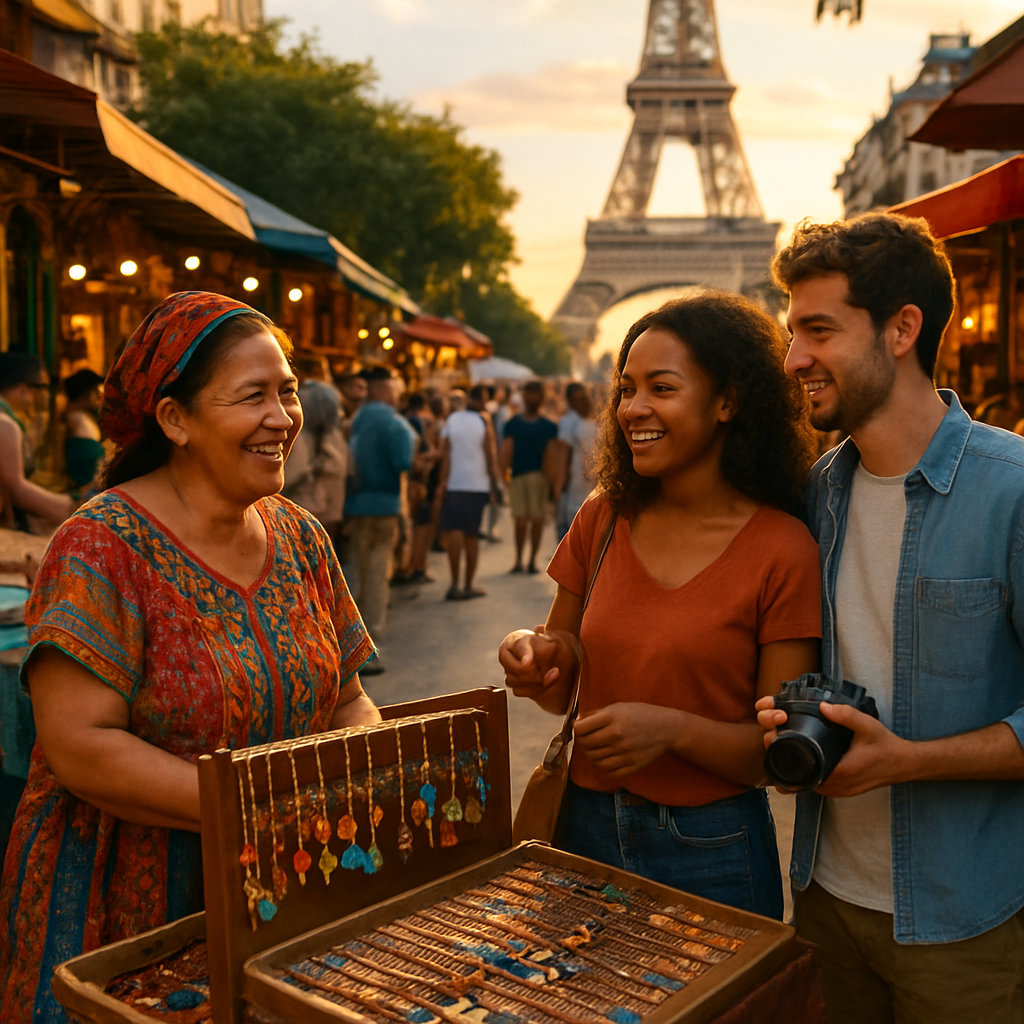Beyond the Passport Stamps Discovering Hidden Cultural Gems in Tourist Hotspots

Tourism has evolved far beyond simply collecting passport stamps or ticking famous landmarks off a bucket list. As travelers become more discerning, there’s growing interest in experiencing authentic cultural encounters, even in destinations that might seem overrun with tourists. The challenge lies not in avoiding popular destinations altogether, but in discovering the hidden cultural treasures that exist alongside and sometimes within major tourist attractions.
Many travelers express frustration at feeling trapped in “tourist bubbles” where authentic experiences seem impossible to find. Yet every destination, no matter how popular, contains layers of cultural richness waiting to be discovered by those willing to look beyond the obvious.
Finding Cultural Authenticity in Tourist Hotspots
Paris attracts over 30 million visitors annually, with most flocking to the Eiffel Tower, Louvre, and Notre-Dame. Yet just steps away from these icons, authentic Parisian life unfolds in neighborhoods like Belleville, where Chinese and North African communities create a vibrant cultural tapestry. Here, you might stumble upon impromptu street performances or family-run patisseries where locals debate politics over coffee and cigarettes.
“I was taking my kids to all the usual Paris spots when our hotel concierge suggested we visit the Marché d’Aligre instead of another museum,” shares Maria, a family traveler from Boston. “We spent the morning watching my daughter practice French with vegetable vendors and my son sample cheeses he’d never try at home. It became the highlight of our trip.”
This pattern repeats worldwide. In Barcelona, while tourists pack La Rambla and Sagrada Família, locals gather in the Gràcia neighborhood for community festivals where human tower building competitions and folk dancing preserve Catalan traditions. In Kyoto, while visitors crowd Kinkaku-ji (the Golden Pavilion), locals practice morning tai chi in hidden temple gardens or participate in traditional tea ceremonies in private homes.
The most meaningful cultural experiences often happen when you step just slightly off the well-trodden path. In Venice, crossing one bridge away from St. Mark’s Square can transport you to residential areas where clothes hang from windows and children play in small squares while grandmothers chat on benches.
Cultural authenticity doesn’t necessarily require traveling to remote locations. Sometimes it means experiencing familiar places differently visiting popular sites during off-hours, engaging with local guides who offer insider perspectives, or participating in everyday activities rather than just observing monuments.
Practical Strategies for Cultural Discovery
Finding these hidden gems requires intention and flexibility. Start by researching beyond typical guidebooks. Online forums where expatriates and locals discuss their neighborhoods often reveal spots tourists miss. Social media groups dedicated to specific destinations can provide current information about temporary exhibits, neighborhood festivals, or pop-up cultural events.
Timing matters tremendously. Visiting major attractions during early morning or evening hours not only helps avoid crowds but often allows glimpses of local life. The Spanish Steps in Rome transform from a tourist-filled photo spot during the day to a genuine local hangout in the evening, where Romans meet friends and share bottles of wine.
Food offers perhaps the most accessible entry point to authentic culture. Skip restaurants with tourist menus in multiple languages and look for places packed with locals. Morning markets particularly reveal authentic daily life Bangkok’s morning markets buzz with activity hours before most tourists wake up, offering a glimpse into Thai food culture impossible to experience in the evening.
“We got completely lost in Istanbul’s back streets and ended up in a tiny restaurant where no one spoke English,” recalls David, a photographer from Melbourne. “Through hand gestures and my terrible attempt at Turkish phrases, we ended up being invited to join a family celebration. They insisted we try homemade dishes I’d never seen on any restaurant menu. That spontaneous connection taught me more about Turkish culture than any guided tour.”
Learning even basic phrases in the local language transforms interactions. Shopkeepers, taxi drivers, and food vendors often share recommendations and stories when travelers make this effort. These conversations frequently lead to suggestions for local events or neighborhood spots that wouldn’t appear in travel guides.
Community-based tourism initiatives have emerged in many popular destinations, offering authentic experiences while ensuring tourism benefits local residents. In Amsterdam, programs like “Untourist Guide” connect visitors with locals for activities like plastic fishing in canals or participating in urban farming projects creating meaningful cultural exchange while addressing community needs.
Some travelers find success by following a passion or interest. A cooking enthusiast might discover authentic culture through a market tour with a local chef, while a music lover might find genuine connection at a neighborhood jazz club. These interest-based approaches often lead to deeper cultural understanding than generic sightseeing.
Seasonal and religious festivals provide windows into local traditions, though they require respectful participation. Attending a neighborhood saint’s day celebration in Mexico or a local temple festival in Thailand can provide authentic cultural experiences even in heavily touristed areas if approached with appropriate sensitivity.
Accommodation choices significantly impact cultural discovery. Staying in residential neighborhoods through apartment rentals or locally-owned guesthouses positions travelers to observe daily routines and interact with residents. Many travelers report their most authentic experiences came from conversations with neighbors or recommendations from apartment hosts.
Technology has created new pathways for cultural connection. Apps like EatWith facilitate meals in local homes, while others connect travelers with resident guides for personalized experiences. These platforms enable direct cultural exchange that bypasses commercial tourism entirely.
The growing “slow travel” movement encourages deeper engagement with fewer destinations. By spending more time in one location, travelers naturally move beyond tourist highlights and begin to discover neighborhood rhythms, local gathering spots, and community events.
Cultural authenticity sometimes emerges unexpectedly. Getting caught in a rainstorm might lead to shelter in a local café where you witness everyday interactions. Transportation delays might result in conversations with locals sharing the same predicament. Remaining open to these unplanned moments often yields the most genuine cultural encounters.
Finding authentic experiences requires balancing research with spontaneity. Too much planning can prevent the serendipitous discoveries that often become trip highlights, while too little can leave travelers trapped in tourist zones. The sweet spot involves having enough knowledge to step confidently beyond tourist areas while remaining flexible enough to follow unexpected opportunities.
Cultural discovery also requires acknowledging that “authenticity” itself is complex and evolving. Cultures aren’t static, and local traditions incorporate outside influences while maintaining distinct identities. The neighborhood pizzeria in Tokyo or the hip-hop dance class in Paris represent authentic contemporary culture as much as traditional temples or historic sites.
The most rewarding travel experiences often come from embracing this complexity recognizing that authentic culture exists alongside tourism, sometimes hidden in plain sight for those willing to look more deeply. By approaching even the most popular destinations with curiosity and respect, travelers can discover meaningful cultural connections that transcend typical tourism.
These discoveries transform travel from passive consumption of famous sights into active engagement with living cultures creating memories and connections that last far longer than photographs of landmarks. The true value of travel lies not in how many places we visit, but in how deeply we connect with the cultures we encounter along the way.


